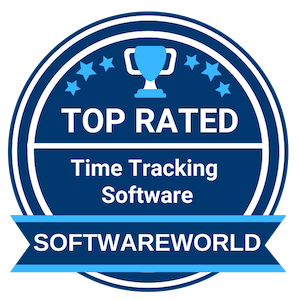Whether you’re a new freelancer or one who is trying to strategically grow your business, you’re likely always looking for new ways to get the best bang for your buck and send invoice templates worthy of your hard work. In other words, you’re searching for the best ways to measure your effort spent vs. your compensation received, even from when you draft a scope of work template or a quote template. We’re not just talking about time management secrets, but also tools that will give you insights into your actual productivity levels.
In your search, you’ve probably come up across the term ‘timesheet’. But what is a timesheet? How does it work and why should you use it? Answering all those questions and more, here are the top four things you need to know about timesheets.
1. What is a timesheet and what it is used for?
Once upon a time, before the age of apps, SaaS and sophisticated product suites like Bonsai, timesheets were actual, well, sheets. Timesheets started as physical pieces of paper that businesses used to keep track of their employees’ working hours.
Though the timesheets of modern times are digitized, they are used for many of the same reasons. Timesheets essentially help businesses keep track of the time their team has spent in the workplace or working on a particular project. Team members are sometimes required to report on their timesheets when they take holidays, or when they take breaks throughout the day. That information can then be used to determine how much the employee will be paid, or to figure out how much to invoice a client at the end of the month.
The history of the timesheet
Ever wondered how timesheets came to be? They were actually created in the 1950s by the American Bar Association (A.B.A.) as part of the profession’s efforts to make lawyers start selling their services in terms of hours. Timesheets were their way of tracking those hours so they could bill and invoice their clients accordingly.

2. Who uses timesheets?
Traditionally, timesheets were mostly used by HR professionals to sort out payroll. A timesheet is a useful tool to help the HR team (or a business owner if they have no HR department) figure out how to fairly compensate employees for work done - especially when they’re automated.
However, timesheets are also often used by freelancers and other self-employed people - from lawyers and accountants to designers and writers - to track their billable hours either per client or per project. In fact, more than 100,000 freelancers use Bonsai’s time tracking tool on a daily basis to better understand where their precious hours are going. After all, when you’re a freelancer, time is money.
Figuring out what is a timesheet and how to use and interpret it is a great step in learning how to manage your time properly. It can also help you better understand where your time (and thus where your money) is going, so you can make smarter business decisions and better manage your budget.
3. Why should I use a timesheet?
Why do freelancers and other business owners use timesheets? It turns out there are many benefits of tracking your time in a systemized way. According to the New York Times, today’s bosses are using time tracking to not only monitor their employees’ work efforts but also find better ways to help them focus and actually enjoy their work.
Here are just some reasons why you might consider using a timesheet.
3.1. Easier billing
Timesheets are practically essential if you’re working under an hourly contract or a retainer (as opposed to a fixed-price contract). By tracking how many hours you’re spending on a particular project, you have a crystal clear indication of how much you should bill your client at the end of the day, week or month - whatever your billing cycle is. This is especially true if you use software that allows you to automatically invoice your clients from your timesheets, like with Bonsai’s freelance invoicing component.
3.2. Better estimate your time
Chances are, clients have probably asked you to estimate the amount of time it will take you to complete a given project, either because they want an idea of how much to budget (i.e. under an hourly contract) or because they’d rather you quote them them a fixed fee.
By tracking your time, you’re better able to understand how long it takes you to complete a particular kind of project (e.g. it may take you two hours to write a blog post or three days to program a website), so you can deliver more accurate estimates and ensure you’re being adequately compensated for your work.

3.3. Discover where you’re wasting your time
On a similar note, tracking your time will help you see which tasks or projects are taking up way more time than they should. Maybe you thought it only took you 10 minutes to write an email when in reality it took 20 minutes, or maybe you’ve been wasting two hours every week creating to-do lists.
On the flip side, you may be far more productive in some areas of business than you realised. Getting familiar with how you spend your typical workday is a great way to manage your time and set more realistic productivity goals for yourself.
3.4. Determine how much time you actually spend working
Do you ever feel like you’re working around the clock, putting in 80+ hours a week? Or maybe you’re worried you’re not actually working hard enough and should be taking on more clients. Using a timesheet allows you to clearly understand your workload, so you can see for certain whether you’re overworking yourself or have room to take on some bigger projects.
4. How do you use timesheets?
Okay, so you now know what is a timesheet and why it’s so crucial that you use one - but how do you actually use them? You don’t live in the stone age, so chances are you’re not going to go out and buy a bunch of paper timesheet cards to help you track your time. What are some alternatives?
You could use a notebook, or build an easy timesheet template in Excel or Google Sheets. But, one of the simplest things you can do is actually to choose software that helps you easily track your time digitally and use that info to bill your clients quickly and simply.

Timesheet keeping made easy
Digital timesheets are the best solution if you’re looking for a way to track your time that doesn’t require much effort. After all, nobody wants to waste time tracking their time - it kind of defeats the purpose.
Bonsai’s time tracking features were designed specifically with freelancers in mind. Our tool allows you to track your time with a single click and uses a straight-forward, streamlined design that doesn’t complicate things. It also allows you to log hours manually or automate your timesheets, making things far easier come invoice time.
You’ll particularly want to look for an all-encompassing solution, with timesheets that integrate themselves into your existing workflow. For example, our software allows you to automatically invoice your clients straight from your timesheets, so you don’t have to waste unbilled time manually collecting, inputting and processing all your info.
Ready to start using timesheets?
From now on, whenever someone asks you “what is a timesheet”, your answer is sure to be “something that helps freelancers like me manage our time so much better.” Tracking your time in an easy-to-use digital timesheet not only saves you tons of time, and it also helps you better make sense of where your efforts are going. Better yet, it helps you communicate that to your clients.
If you’re ready to start using an integrate time tracking solution, Bonsai has you covered. Sign up for a free trial today.







